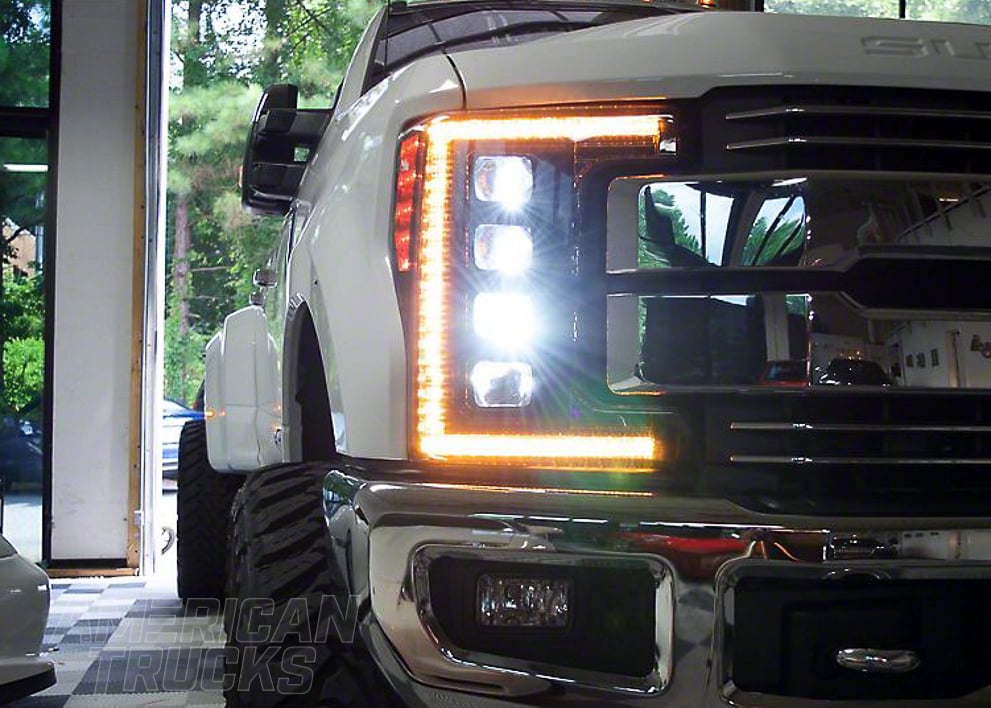Why not upgrade the factory headlights of your F-250? You will be going off-road and you will be working late. Often times visibility will be low on account of the weather. Let’s not forget the effect of tired eyes in low light conditions. Yes, you will be adding cube lights and light bars to the rig but you can’t run these all of the time and even when you are, additional light from the headlights will only help you see better. Headlights do aid with visibility but are also a great way to personalize your F-250. So we ask again, why not upgrade the headlights on your truck?
Table of Contents
- Stock F-250 Bulbs
- What Types of Upgrades are Available?
- Improved Halogens
- LEDs
- Projector
- HID
- Which Type to Use for Off-Road, On-Road, Camping, etc.
- How to Aim the Lights
- Proper Practices for Lifted Trucks
Shop F250 Headlights
Most folks will routinely find themselves at a job site after dark, especially in the winter months. Relying on the stock headlights will only get you so far. Rather than guessing what's beyond your light line, upgrade your headlights so you have plenty of time to react to unexpected obstacles.

